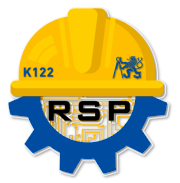…photo and video:
Laser scanning and object analysis
Autonomous robotic masonry system: laser scanning, object analysis and project comparison with reality


DEKMATIC - A robotic masonry system in M1:1
Autonomous Robotic Masonry System: Robotic Masonry Demonstrator at Scale 1:1


Fine-tuning robotic bricklaying technology
Verification of robotic bricklaying technology in the DEK Atelier laboratory


Checking the functionality of the prototype at scale 1:1
Autonomous robotic masonry system: checking the functionality of the prototype at scale 1:1


Checking the functionality of the end device for robotic masonry
Autonomous robotic masonry system: testing of end-device for robotic masonry


Checking the functionality of the prototype at scale 1:3
Autonomous robotic masonry system: masonry bond testing without centering and with centering. Robotic mortar application tests using mortar dispenser, PUR adhesive and dipping.


SW for robotic masonry
During the project, special software was developed, which includes a converter between the BIM environment via the IFC 4.0 format and the industrial robot interface. The software calculates individual building wall elements, layouts of cuts and openings, and optimal placement of the robotic hand.


Robotic paving
Paving with the help of a KUKA robotic system


Robotic brick cutting
Cutting of standart brick elements with robotic saw.


Modelling of Concrete Elements: Lamp Base
Design and visualization of object in simulation software Rhino 6.0, simulation and animation of production process in SW Grasshopper, modelling and programming of robotic movements (Grasshopper + KUKA|prc), production of formwork from polystyrene by RHWC method, process of formwork realization, its processing and final concreting.


Painting robot and image processing
Picture design and visualization in simulation SW Rhino 6.0, tracing tool center point of robotic hand, vectorization and optimization, modelling and programming of robotic movements (Grasshopper + KUKA|prc), production of large-area images, final processing and framing.


Modelling of concrete architectural elements
Modelling and production of complex concrete architectural elements using industrial robots.


Innovative Laboratory for Doctoral Study Program
Development and production of work tools and vacuum suction tools for masonry work. The working tool (grip) ensures the technological processes of the brickwork: depalletization, centering of the brick at the transfer table, capturing, relocating a brick element to goal place; positioning the brick element at the exact position in the structure, applying a mortar to the brick element; preparing the shape and size of elements by precise cutting.


Laboratory equipment for robotization of building processes
Robot installation, installation of safety elements, installation of wiring boxes and switchboards including Beckhoff modules, installation of storage racks and cabinets, placement of workshop table, bench drill and other support equipment and tools.


Day of open doors 25.-26.01.2019
Learn how the construction is breathing. Find out what lies under construction, architecture and geodesy. Together we visit the labs, sit in the lecture hall and talk to students and teachers. Shake your hand with the robotic worker, you'll see a membrane architecture studio.


Day of open doors 23.-24.11.2018
For both days we have prepared for you a program that will guide you throw process of study and research. At the presentations you will find a lot of brunches and departments at our faculty. Shake your hand with a robotic worker or experience for yourself what a fire experiment looks like.


Modelling of Industrial Robotic Masonry System
The project was devoted to the design of a functional model of a masonry robot. The output of the project was an industrial robot that will be able to technically implement the complete bricklaying process. With the help of a specially developed software, the robotic masonry system can convert the necessary mathematical model data from the BIM environment to the KUKA KRC4 industrial robots and perform optimum robotic hand motion design.


Training Beckhoff
Programming and diagnostics in TwinCAT 3 acc. IEC 61131-3. The principle of real-time control processing. PLC programming.


Various robotic experiments
Processing of input and output signals, assembly of safety elements. Vacuum suction and valve control. Installation of sensors (ultrasound and laser). Attempts: walling, drawing, processing of vector images and mathematical curves.


Training of industrial robots KUKA 2.0
In 2017, one member of the team graduated from next training in the programming of KUKA industrial robots in KRC4: Robot Programming 2.


Functional model of a painting robot
The project was devoted to the design of a functional model of a painting robot. The output of the project was a robot, created in a scaled-down scale, capable of using a control unit and special computer programs to paint a small area of the wall with paint. During the project, a functional robotic paint nozzle, a moving part, a control including optimization procedures were developed. 


Robot KUKA Agilus
In 2016 we bought our pet KUKA Agilus KR10 R1100 sixx from several different sources of funding. The laboratory was located at the Faculty of Civil Engineering, CTU in Prague, room B584.


Training of industrial robots KUKA
In 2016 our vision of the future of building robots was significantly shifted. Cooperation with the leading manufacturer of industrial robots KUKA was established. In the same year two team members graduated from basic training in programming KUKA industrial robots in the KRC4 environment..


Building robot LEGO
The history of the laboratory begins in 2010, when the idea of creating a building robot for heavy and demanding work was born at the Department of Construction Technology, Faculty of Civil Engineering, CTU in Prague. The first construction robot was built from LEGO MindStorm and was able to create a small part of wall from the LEGO bricks.





